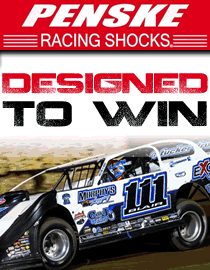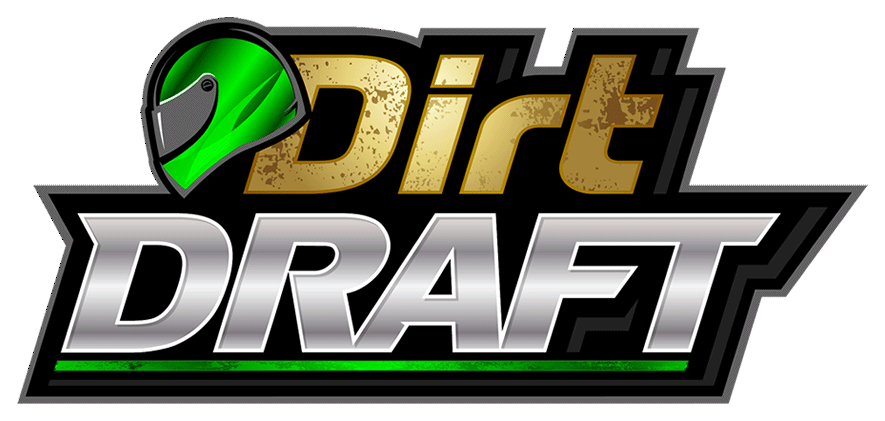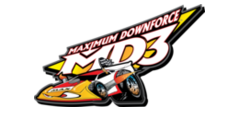
Kankakee County Speedway
Series pioneer recalls Hell Tour's bumpy start
By Todd Turner
DirtonDirt managing editorKANKAKEE, Ill. — Fans of the modern-era DIRTcar Summer Nationals take it for granted that they’ll have the chance to attend five (or 10 or 20 …) Super Late Model races at their favorite tracks each summer.
The Midwest’s summer motorsports institution has become an annual racing rite that’s as natural for some families as a Fourth of July picnic or trip to the beach. But upon the tour’s 1980s genesis, there were no such guarantees that the wing-and-a-prayer series would be around even the next year, remembers Hall of Fame driver Pete Parker, who occasionally attends series event to assist his son Paul, a Late Model racer.
The brainchild of United Midwestern Promoters co-founder Bob Memmer, the Summer Nationals bucked and lurched its way toward maturity. Intended to bridge Macon (Ill.) Speedway's Herald & Review 100 with the Gopher State 50 at the Steele County Fairgrounds in Owatonna, Minn., with a stretch of races at tracks in between, it would take a handful of seasons before the tour reached even the 10-race mark.
Pete Parker, now 76, was around for the tour's early years and remembers hanging out with competitors after 1988’s tour-opening Gopher State 50 promoted by Jerry Ingvalson.
“We didn’t even know about (the tour)," Parker said. “We were standing around afterwards drinking some beer, and then (Jim) Curry and I forgot who else, they said, ‘Oh, come on down.’ We took off and it was, I don’t know, it must have been 500 miles and about 90 degrees.”
Before Parker knew it, he was part of the yet-to-be-officially-named UMP Series, racing with Curry, Larry Phillips, Mike Wallace, Dick Taylor and more tour pioneers as the circuit rolled through Illinois, including the fifth-mile Macon layout.
“We got down there and then I didn't never run on some of them little tracks and we went to Macon for the first time and it was quite an experience,” Parker recalled before Wednesday's Summer Nationals event in Kankakee, Ill. “I think I was about a top-five car in most of them. And then Memmer gave me the check for $1,000 — that was my Summer Nationals championship deal.”
Parker paused and finally concluded in his gravelly voice: "It evolved from there.”
Evolved into a series that helped make Scott Bloomquist a star. Evolved to provide a bigger stage for the best drivers in Illinois. Evolved to form a champion’s list that rivals the sport’s all-time national tours. Evolved into what it is today.
Parker, attending the Kankakee event to assist his racing son Paul, said he had no idea in the 1980s if Memmer’s idea would ever amount to anything when he left Owatonna and headed south.
“We had a pickup and an open trailer and we just jumped in. We probably stopped and bought a toothbrush or something, I don’t remember,” Parker said. “It was an experience. It's amazing. When we see it on a T-shirt or something (now), we kind of giggle about it. Sometimes you have better results by accident than on purpose, I guess.”
Parker, who had already traveled nationally for more than 10 years while funding his racing through Reliable Welding (and building custom race trailers), was a known entity in his No. 10 with clearcut graphics, often driving a chassis he built himself (also called Reliable).
With the 2025 version of the Summer Nationals starting off with a throwback — early tour winner Billy Moyer captured this year’s tour’s opener as a 67-year-old — Parker recalled those early Summer Nationals days.
The tour developed a year or two after the UMP sanctioning body was founded with restrictive body rules for “small” cars, an answer to the wedge car era that had gotten out of hand, making racing less competitive — and more expensive. UMP sanctioned weekly tracks, but Memmer’s tour would preach the UMP gospel to the farther reaches of dirt tracks in the Midwest and beyond.
“Racing, it wasn't a living. It was more fun back then. There's good cars and good drivers, but it isn't nothing like it is now,” said Parker, who remembers that “we used to build stuff homemade, and I think the car I had that year was a homemade, a car I built, a copy of MasterSbilt or Rayburn or something like that.”
When he won the championship in 1988, it was more accident than intention.
“I don’t know how you'd explain it. I don't know if (Memmer) knew what it was. I think when I got paid, I don't think we knew what we were racing for even,” he said. “I don't think it was that thought-out of a series, you know?
“I can remember most of (the venues), but I saw the tracks the other day and I didn't even remember going to Granite City (Tri-City Speedway near St. Louis, Mo.). I remembered the one track where you drive through the junkyard. Is that St. Charles? And then Macon. Macon. That was an experience.
“Owatonna, that was always kind of a one-off deal. Owatonna was always a very well-promoted race, so we got to know (promoter) Jerry (Ingvalson) from up there. They always rounded up money. They didn't always have a good turnout of cars, but they had a good turnout of everything else, fans and money, and we still see him quite a bit.”
Other 1980s-era winners on the circuit included Steve Kosiski, Tom Helfrich, Rick Standridge, Dick Potts, John Gill, Roger Long and Gary Webb, the eastern Iowa driver and future Hall of Famer who was UMP’s first weekly champion.
It was an era that helped bridge the gap between the Upper Midwest and the Lower Midwest as the Summer Nationals blurred the existing lines of race regions.
“Well, now it's like La Salle (Ill.) was the cutoff line, you know, you had the Fairbury guys and you had the northern (drivers),” Parker said. “The La Salle guys and you get a few, we got the Wisconsin guys, but that was before WISSOTA. But I don't think any of them guys came down. There probably wasn't that many guys that ran the whole deal.”
Parker remembers that Springfield, Ill.’s Dick Taylor was probably his toughest 1988 competition, but Taylor didn’t attend the Gopher State 50.
Within a few years, Memmer invited Bloomquist to run the series, and he captured 10 of 14 races as the Summer Nationals name was cemented and the tour visited five states, expanding its reach and raising the level of competition.
“And then it was like they always wanted to get” higher-profile drivers, Parker recalls. “I think they got (Jack) Boggs to come up and Freddy (Smith) to come up and some of them guys.”
The 1990s transitioned into “a huge changing of the guard,” Parker said. “I remember (Bill) Frye coming up there and Bloomquist, Bloomquist must have come up in early (years). He won most of them” in the early 1990s.
All the while the Summer Nationals developed its reputation for traveling stars, inevitable controversy, sizzling hot weather — and some of the country’s best racing.
“When it was summer it was hot-hot. It was hard and brutal. A lot of guys came and didn’t come back,” Parker remembered of trips to Iowa when drivers “either cooked motors or tore up stuff.”
When Parker sees what the Summer Nationals has become, he gets the feeling that he wouldn’t have fit in with the modern era of expensive technology, expensive cars and expensive powerplants.
“My summation of the whole deal is if it was like this when I started, I would have never raced,” he said. “We built our own stuff and did it on a shoestring compared to nowadays.”
But remembering where the circuit began, as Parker did for 45 minutes or so with conversation in his team’s trailer during this year’s Summer Nationals, is always fun.
“We still talk to guys that were around,” he said. “We’re getting old, but we're not all (gone). We’re dropping out one by one, but it's still in our memory bank.”

















































